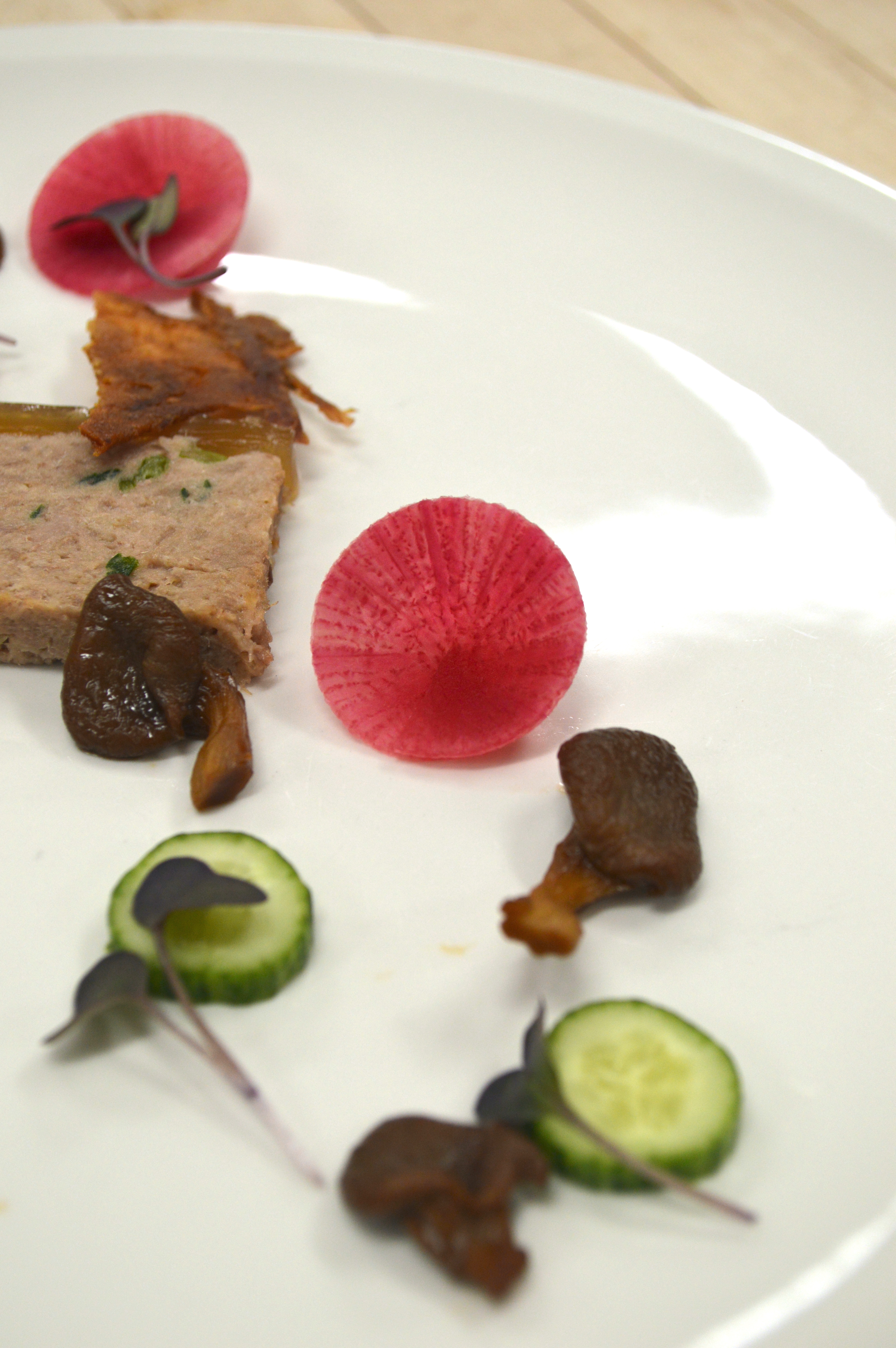
If you had asked me a year ago what the principle uses of a ring cutter were, I would have said for punching biscuits and plating components in tidy circles. For use in plating, I’m picturing especially preparations like rice, lentils, and other starches, beef or tuna tartare, that kind of thing.
One of the simple finesse techniques that is ubiquitous in the Eleven Madison Park cookbook is using ring cutters to trim ingredients that are already naturally round, to make them perfectly round. Any time a beet, a scallop, or a daikon, are sliced, they are typically then punched with a ring cutter. The image above is a slice of pickled watermelon radish that I trimmed in such a manner.
While the visual effect is striking, this is a super tedious process, and I don’t know if I will use it regularly. I did however find one preparation where it’s a game-changer and worth the effort in a fine-dining setting. I’ve been working on a perogy dish for our menu, but I want to make sure it doesn’t present like a typical bowl of perogies boiled from frozen. When we’re shaping the perogies, after the dough is folded around the filling and crimped, we clean up the rounded edge with the ring mould that was used to cut the dough. It gives them a very clean, precise, look that you don’t usually see with handmade perogies.
In the EMP cookbook there are some recipes using ring cutters in which the trim is naturally incorporated into another component of the dish. In others it simply says “Discard trim.” I wonder if that’s really what they do. Or perhaps that trim does get used in an unrelated preparation, but would be irrelevant for the recipe in the book.
There is a a great example of a scallop dish that uses its trim on the same plate. I basically ripped off that dish for a wine dinner we did this fall. I will post about shortly.